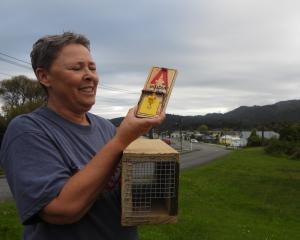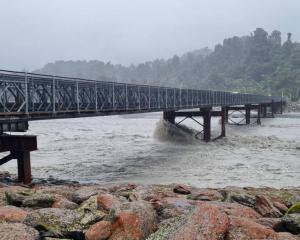Five years after the Pike River Mine disaster, there are several new babies, several new marriages, and the youngest of the Pike children are heading off to school.
As the families returned to the mine site in the hills north of Greymouth on Thursday to remember their men, there was also talk of a way ahead.
The 29 men remain entombed deep underground, and a legal challenge over their deaths on November 19, 2010, is grinding its way through the courts.
Yet, a new ''Great Walk'' is confirmed, health and safety reforms have been drafted, and the thousands of dollars in donations that poured into Greymouth that terrible November are awaiting their place in a new visitor centre at the mine site at Atarau.
Among the families left behind, some have moved away from the West Coast, while others have stayed; there are new babies and remarriages.
''A lot has happened but nothing has happened,'' said Carol Rose, who lost her son Stuart.
This fifth anniversary is the last one the families will officially organise, but many, who found comfort in each other and have made great friendships, will continue to mark November 19 together in smaller groups.
''I can't really talk for all the families,'' Mrs Rose said. Everybody was at a different stage, but most were excited about the new walking track, with 21 families in favour, she said.
But they were all agreed they wanted someone to take responsibility for what happened to their men.
''Not blame, but responsibility. I hate the word blame. The families are pretty unanimous - they want justice,'' Mrs Rose said.
Anniversaries were always hard, with that yearning to get the men back, she said.
On Thursday, Bernie Monk, spokesman for the families, remembered his son Michael - a builder, not a coalminer who was down the mine that fateful day - and is busy working on the Great Walk and the on-site memorial.
''There's lots of work to be done. If the [Great] Walk is done in the next three or four years, I'll be surprised,'' Mr Monk said.
He was thrilled the $10 million walk would give something back to the Coast economy, which had been struggling with five years of mine closures that started with Pike River.
''We are putting something back, something forever. The families have got to realise - they have done that.''
His biggest fear was that nothing would change after the disaster. But new health and safety legislation had been drafted, and the planned visitor site would be a permanent reminder of the lessons of the disaster.
The families' lawyer, Colin Smith, said they still had in storage a ''plethora'' of things donated from the world over - condolence books, wreaths, paintings, gifts from children, and letters.
They hoped the new visitor centre at the mine site would be able to display and store those items.
Grey District Mayor Tony Kokshoorn, whose father and father-in-law both worked in coalmines, stood shoulder to shoulder with the families five years ago.
In the decade before the disaster, he helped the Pike River Coal Company get access to the mine, which was promised as a huge employer.
''My family and wider community support made the disaster and aftermath easier to cope with, but with no body recovery it remained stressful for a long time after the disaster,'' Mr Kokshoorn said.
Five years on, many Coast residents were still angered by the health and safety failings, he said.
West Coast-Tasman MP Damien O'Connor, who sat through parts of the Royal Commission of Inquiry, said the region faced some big challenges.
''I'm sure we can overcome,'' he said, referring to the glut of coalmining job losses that started with Pike, and were compounded by the slump in international coal prices.
The Coast had moved on, even if it was ''hard to say'' it had.











